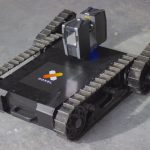 Construction is a huge industry that has long struggled with productivity issues. One startup that is attempting to improve matters is Doxel, who utilize AI and computer vision to visually monitor every single aspect of a project.
Construction is a huge industry that has long struggled with productivity issues. One startup that is attempting to improve matters is Doxel, who utilize AI and computer vision to visually monitor every single aspect of a project.
The system consists of a team of autonomous devices that visually monitor project progress. The data is sent to a deep learning algorithm that aims to inspect both the quality and quantity of work in real-time. The idea is that inefficiencies or slow progress are identified immediately so project managers can intervene.
“You can’t improve what you can’t measure. Without real-time visibility into quality and progress, managers simply can’t boost productivity. Our turnkey solution literally tracks progress for hundreds of thousands of line items in project budgets and schedules, comparing actual performance to original plans,” the company explain. “This is transformative for an entire capital project team. With Doxel’s system in place, project managers can react in minutes, not months, increasing productivity by fifty percent and bringing in projects twenty-five percent under budget.”
Tracking and transparency
Data suggests that some 80% of construction projects are delivered over budget, with typical delivery times 20 months behind schedule. Doxel believe this is largely because product managers lack real-time visibility of the project’s progress.
For instance, it’s easy to measure how many hours someone works, but it’s much harder to measure how much work that person actually accomplishes, or indeed if that work was of a high quality. When the construction site has many teams, this challenge intensifies as the amount of things to inspect grows exponentially. This can often lead to nasty surprises that are only realized months after they’ve happened.
Doxel aim to fix this with their cutting edge computer vision software allowing AI to grasp not only the world in 2D but in 3D.
“Construction projects involve millions of similar-looking components, packed tightly together in a dark environment. It’s a Molotov Cocktail of challenges for computer vision software,” they explain. “Usually, the amount of training data such an algorithm would need would be enormous, and even then, the results may not be reliable. With our proprietary 3D semantic algorithms, we’ve been able to get more reliable results with a fraction of the training data. Our algorithms recognize and contextualize objects not just based on color, but also based on shape, location and size.”
The industry currently tracks progress in a very analog way, with a combination of physical measurement, visual inspection and clipboards. Doxel aim to revolutionize that via real-time, autonomous inspections that they believe could improve productivity by as much as 50%.
It’s an interesting project, and you can learn more about it via the video below.
https://vimeo.com/252293584